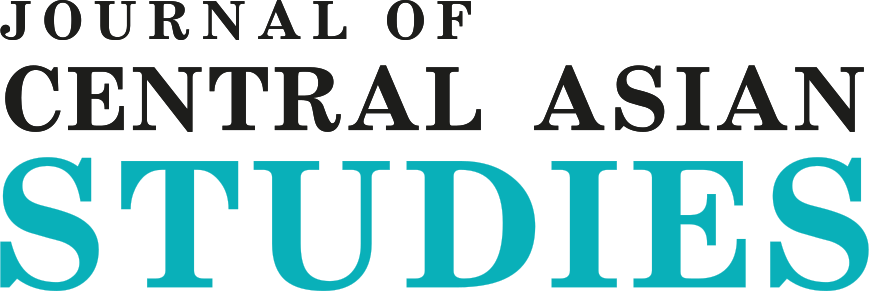Religious Extremism and Terrorism in Central Asia: An Overview of Radical Groups
DOI:
https://doi.org/10.52536/3006-807X.2024-4.004Keywords:
religious extremism, terrorism, security, ISIS, terrorist groups, Central Asian militants, institutionalization, risks, radicalizationAbstract
In January 2019, the United States announced the defeat of the terrorist organization "Islamic State" (hereinafter referred to as ISIS). This marked an interim milestone in the years-long international fight against ISIS. However, zones of instability continue to attract radical groups. Today, they operate in Syria's Idlib province, Lebanon, Mali, and Nigeria. In addition, in 2021, the Taliban came to power in Afghanistan, significantly changing the status quo in the broader Central Asia+ region. In October 2023, a military operation began in Gaza, which also set various terrorist organizations in motion and pointed to a global ideological divide. In the context of events in Syria and Afghanistan, which over the past decade have become centres of the so-called "global jihad," the potential threats and risks posed by terrorist and extremist organizations from Central Asia are of significant scientific interest.
The purpose of this article is to analyse the activities of the main radical groups originating from Central Asia. The interest is primarily driven by the fact that an active process of institutionalization of Central Asian militant groups has taken place in Syria and Afghanistan, leading to the emergence of new associations. The study examines the conditions under which religious extremism spreads and presents a chronology of the formation of radical groups, as well as their place in the overall architecture of regional security. The novelty of this article lies in the assessment of existing trends, which suggest that religious extremism and terrorism will continue to be one of the main factors destabilizing the situation in the Central Asian region.
The ability of Central Asian countries to demonstrate resilience and leverage their internal strengths in addressing threats plays a crucial role in shaping the region's future as a secure, competitive, and prosperous part of the international landscape.
References
Anti-Terrorist Center of CIS Member States. (2016). The State Committee for National Security of Kyrgyzstan identified the organizers and perpetrators of the attack on the Chinese Embassy in Kyrgyzstan. CIS ATC. https://www.cisatc.org/news/8500
Burke, J. (2024). Islamic State recruiting from Tajikistan and other Central Asian countries. Retrieved from “The Guardian”, 2024 March 24 https://www.theguardian.com/world/2024/mar/24/islamic-state-recruitingmilitants-from-tajikistan-and-other-central-asian-countries
Federal Security Service of the Russian Federation. (2024). The FSB of Russia, in cooperation with Rosfinmonitoring and the Investigative Committee, eliminated an international resource channel for the "Katiba Tawhid wal-Jihad" terrorist group. FSB Press Center. http:// www.fsb.ru/fsb/press/message/single.htm%21id%3D10439924%40fsbMessage.html
Global Terrorism Index (2024). IEP (Institute for Economics and Peace), p. 72-73. https://www.economicsandpeace.org/wp-content/uploads/2024/02/GTI-2024-web-290224.pdf
Hill, F. (2003). Central Asia: Terrorism, religious extremism, and regional stability. Testimony before the House Committee on International Relations, Subcommittee on the Middle East and Central Asia. Retrieved from The Brookings Institution. https://www.brookings.edu/wp-content/uploads/2016/06/20030723-1.pdf
"Islamic Jihad Union": A portrait of a terrorist organization. (2016). Retrieved from Anti-Terror Today. https://antiterrortoday.com/baza-dannykh/terroristicheskie-i-ekstremistskie-gruppirovki/soyuz-islamskogodzhikhada-gruppa-islamskogo-dzhikhada/386-soyuz-islamskogo-dzhikhada-portret-terroristicheskojorganizatsii
The Islamic Movement of Uzbekistan swears allegiance to ISIS. (2015). Retrieved from the Uzbek Service of Radio Free Europe/Radio Liberty. https://rus.ozodi.org/a/27175205.html
Islamists from Central Asia charged in Germany. (2024). Retrieved from Deutsche Welle. https://www.dw.com/ru/v-frg-predavili-obvinenia-islamistam-iz-centralnoj-azii/a-68910952
The "Jaish-ul-Mahdi" case gains new details. (2016). Retrieved from News-Asia. http://www.news-asia.ru/view/9134
Karin, E., & Zenn, J. (2017). Between ISIS and al-Qaeda: Central Asian militants in the Syrian war. Astana Stratcom Team.
Komar, R., Borys, C., & Woods, E. (2017). The Blackwater of Jihad. Foreign Policy. https://foreignpolicy.com/2017/02/10/the-world-first-jihadi-private-military-contractor-syria-russia-malhama-tactical/
A Kyrgyz man was detained on suspicion of participating in hostilities in Syria. (2023). Retrieved from 24.kg. https://24.kg/proisshestvija/ 279371_kyirgyizstantsa_zaderjali_popodozreniyu_vuchastii_vboevyih_deystviyah_vsirii/
The leader of militants from Kyrgyzstan, Sirozhiddin Mukhtarov, was eliminated in Syria. (2022). Retrieved
from Interfax. https://www.interfax.ru/world/861443
Lemon, E. (2018). Talking up terrorism in Central Asia. Kennan Cable No. 38. https://www.wilsoncenter.org/sites/ default/files/media/documents/publication/kennan_cable_38.pdf
Ning, Y., & Wang, T. (2021). Social movements and political struggle in the Middle East: Concepts, mechanisms, and issues—Localization of Salafist studies. Middle Eastern Studies, 1(82).
Olcott, M. B. (2012). In the whirlwind of jihad. Carnegie Foundation. Post-Soviet Wahhabism has found its niche in geopolitical confrontation. (2013). Retrieved from the interview with B. Babadzhanov. Regnum. https://regnum.ru/article/1626149
Rehabilitation of "deceived victims" returning from Syria begins in Uzbekistan. (2019). Retrieved from Central Asia News. https://central.asia-news.com/ru/articles/cnmi_ca/features/2019/06/11/feature-01
Serenko, A. (2023). The Taliban are preparing for a big war. Retrieved from Media.az. https://media.az/politics/1067935344/andrey-serenko-taliby-gotovyatsya-k-bolshoy-voyne-intervyu/
Serenko, A. (2024). Islamists in Central Asia start anti-China jihad. Retrieved from Novaya Gazeta. https://www.ng.ru/kartblansh/2024-11-24/3_9141_kb.html
Sharipova, D., & Beissembayev, S. (2021). Causes of violent extremism in Central Asia: The case of Kazakhstan. Studies in Conflict & Terrorism, 46(9), 1-15. https://www.tandfonline.com/doi/full/10.1080/1057610X.2021.1872163
Shibutov, M., & Abramov, V. (2012). Report "Terrorism in Kazakhstan – 2011-2012". Almaty.
The St. Petersburg attack led to Abu Salah. (2017). Retrieved from Gazeta.ru. https://www.gazeta.ru/army/2017/04/21/10638311.shtml
Terrorist attacks, cyber shield, and risks to the economy. (2024). Retrieved from the interview with the head of the National Security Committee of the Republic of Kazakhstan, Yermek Sagimbaev. https://www.gov.kz/memleket/entities/knb/press/news/details/808632?lang=ru
United Nations Security Council (2011). Islamic Movement of Uzbekistan. https://www.un.org/securitycouncil/ru/ sanctions/1267/aq_sanctions_list/summaries/entity/islamic-movement-of-uzbekistan
UN Women (2024). FAQs: Afghan women three years after the Taliban takeover. 20 August 2024. https://eca.unwomen.org/ru/stories/explainer/2024/08/chasto-zadavaemye-voprosy-afganskie-zhenschiny-spustya-trigoda-posle-zakhvata-vlasti-talibanom
U.S. and British intelligence agencies create conditions for instability at the southern borders of the CIS. (2023). Retrieved from interview with the head of FSB, Bortnikov A. TASS. https://tass.ru/politika/18971727
The "Uzbek model" of combating terrorism is attracting interest abroad. (2018). Retrieved from interview with the former minister of foreign affairs of Uzbekistan, V. Norov. Gazeta.uz. https://www.gazeta.uz/ru/2018/11/01/ismi/
Uzbekistan-UNSDCF 2021-2025. United Nations Sustainable Development Cooperation Framework 2021-2025, 24 September 2020. https://unece.org/sites/default/files/2021-05/Uzbekistan-UNSDCF-2021-2025.pdf
The war that never happened: How Kyrgyz citizens who returned from Syria live now. (2019). Retrieved from BBC Russian. https://www.bbc.com/russian/features-47281602
Yudin, N. V. (2016). The "Security — Development" link: Issues of theoretical understanding. Moscow University Bulletin. Series: International Relations and World Politics, 1, 39–70.
Zhang, N. (2020). Analysis of the Current Counter-Extremism Situation in Central Asia. Collection of reports of the Northern Forum (No. 2, Issue 280).
Zhirukhina, E. (2024). Foreign fighters from Central Asia: Between renunciation and repatriation. ISPI.
Downloads
Published
Issue
Section
License
Copyright (c) 2024 Akhantayeva S., Mussabekov A.

This work is licensed under a Creative Commons Attribution 4.0 International License.










 Open content is licensed under the CC-BY
Open content is licensed under the CC-BY 


